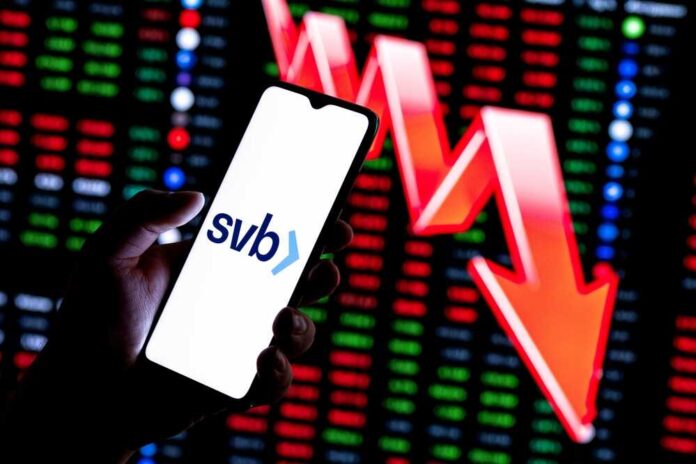
Silicon Valley Bank (SVB) sent out troubling signals for over a year that it was on the verge of imploding, but banking regulators mostly failed to note the impending crisis.
SVB’s balance sheet should have been a warning sign that its assets were far from secure, but industry overseers did not grasp the implications. Of $173 billion in deposits, $117 billion were in low-yield mortgage-backed securities yielding only 1.5%.
This imbalance came even as the Federal Reserve hiked interest rates 450 basis points in just a year.
The result was a bank run that doomed the West Coast financial institution and sent shock waves through the industry. Now the federal government has stepped in with a prohibitively expensive bailout.
#BREAKING: European financial regulators are “furious” at the handling of Silicon Valley Bank by US authorities.
“They tore up a rule book they helped write.”
Senior Eurozone official said the US showed “total and utter incompetence” pic.twitter.com/I9BxoUKLCd
— Mario Nawfal (@MarioNawfal) March 16, 2023
Some troubling signs at SVB were detected by regulators, but their seriousness was overlooked until it was too late. The Federal Reserve of San Francisco flagged the institution and issued six citations over financial practices.
According to the New York Times, regulators by last July implemented a “full supervisory review” of SVB. They also implemented restrictions that prevented the company from expanding through acquisitions.
Still, business continued as usual even as SVB did not have the means to cover depositors. And now the dangers may be more widespread than previously thought.
A new paper by the Social Science Research Network revealed that 186 more U.S. banks face insolvency. The study showed that even if only half of their depositors decided to withdraw their funds, the institutions would collapse.
And unlike what Democrats want to pin on former President Donald Trump, this is Joe Biden’s mess.
Runaway federal spending led to soaring inflation, and that forced the Federal Reserve to implement a series of unprecedented interest rate hikes. A side effect of the central bank’s moves is that bank assets such as mortgage-backed securities and government bonds have lost value.
In other words, the backing for investors’ deposits simply isn’t there as it was before Biden’s inflation ripped through the economy.
As was clearly shown in SVB’s case, a run on these banks is entirely possible if enough investors are spooked by the current financial climate. The FDIC is not a bottomless pit of resources, and as it begins to incur losses, its guarantees may not be as solid as they once appeared to be.














